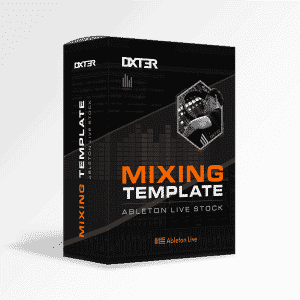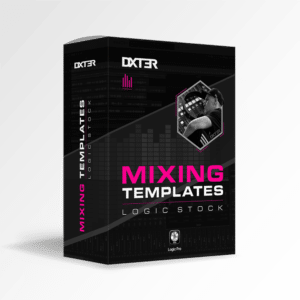Mixing Templates
Sound engineers have to spend countless hours adjusting different parameters of each track to achieve a well-balanced sound. However, with the help of music mixing templates, the process can be streamlined and more efficient.
Recommended Mixing Templates For Your DAW
-
Sale!

Waves Mixing Templates Pro (Logic Pro, Waves)
£69.99Original price was: £69.99.£29.99Current price is: £29.99. Add to cart -
Sale!

Pro Tools Mixing Templates
£54.99Original price was: £54.99.£29.99Current price is: £29.99. Add to cart -
Sale!

Ableton Mixing Templates
£54.99Original price was: £54.99.£29.99Current price is: £29.99. Add to cart -
Sale!

Logic Pro Mixing Templates
£54.99Original price was: £54.99.£29.99Current price is: £29.99. Add to cart
What is Mixing Template?
A mixing template is a pre-configured setting that sound engineers use as a starting point when mixing a song. It includes settings for EQ, compression, reverb, and other effects that can be applied to each track. The idea behind using a mixing template is to save time and provide consistency across different songs.
By starting with a pre-made template, sound engineers can quickly make adjustments to the individual tracks and get a good mix faster.One of the advantages of using a mixing template is that it provides a starting point for the sound engineer to build on.
In addition to providing a starting point for the mixing process, music mixing templates also help sound engineers to develop their mixing skills. By studying different templates, sound engineers can learn about different mixing techniques, signal flow, and effect chains. They can also learn how to use different plugins and how to adjust the parameters to achieve the desired sound.
Our music mixing templates have perfected gain staging and bus routing set up. This allows for more efficient workflow and helps to achieve a more cohesive sound in the mix.
Our DAW mixing templates also include optimized auxes and buses, which allow sound engineers to apply effects and processing to multiple tracks simultaneously. This can further enhance the overall sound and create a more cohesive mix.
By grouping tracks together, applying processing to multiple tracks at once, and creating a cohesive sense of space in the mix, mixing engineers can save time and ensure consistency across different songs or projects.
Unlocking Creative Potential: Possibilities with Mixing Templates in Your DAW
For aspiring sound engineers, using mixing templates can be an educational journey. By studying different templates, they gain insights into various production techniques and sonic possibilities. They can experiment with different combinations of effects and settings, honing their skills and expanding their sonic palette. This continuous learning process contributes to their growth as professionals in the field.
mixing templates offer flexibility and customization options. While templates provide a solid foundation, they are by no means restrictive. Sound engineers can modify and tailor the settings to suit their specific creative vision. Each project may require slight adjustments to meet the unique characteristics of the music, and templates can be adapted accordingly.
Type of Audio Mixing Templates
To use a mixing template, sound engineers need to first choose a template that fits their needs. There are different templates available, depending on the genre of music and the type of instruments being used. Once they have selected a template, they can import it into their digital audio workstation (DAW) software (Logic Pro, Pro Tools, Ableton Live etc…).
After importing the template, sound engineers can start making adjustments to the individual tracks. They can adjust the EQ settings to bring out the desired frequencies in each track. They can also apply compression to control the dynamic range of each track, making it easier to mix with other tracks. Finally, they can apply reverb and other effects to add depth and space to the mix.
Mixing Templates for Beat Mixes
Instrumental mixes play a vital role in various music genres, from hip-hop and electronic to film scoring and ambient compositions. Creating captivating instrumental mixes requires careful attention to detail in terms of balance, dynamics, and sonic aesthetics. Utilizing mixing templates tailored specifically for beat mixes and instrumental arrangements can significantly enhance the process and outcome.
Beat mixing templates provide a starting point for balancing different elements within instrumental mixes. These templates often include pre-configured settings for EQ, compression, and spatial effects that optimize the tonal balance and stereo imaging of the track. They offer a strong foundation from which sound engineers can build upon and fine-tune the mix to achieve the desired sonic impact.
Time is of the essence when working on instrumental mixes. Beat mixing templates expedite the workflow by providing a solid starting point, allowing engineers to focus more on fine-tuning and creative decisions. With a template as a foundation, engineers can efficiently adjust individual tracks, experiment with effects, and shape the overall sonic landscape of the mix, ultimately saving time and increasing productivity.
Remember, while beat mixing templates for instrumental mixes provide a valuable starting point, they should not limit creativity or prevent sound engineers from making custom adjustments based on the unique characteristics of each track. Personal listening judgment and artistic sensibilities remain crucial in creating a distinct and captivating instrumental mix.
Mixing Templates for 2-Track Mixes
Mixing a 2-track, also known as stereo mixing, involves working with a pre-mixed stereo file rather than individual tracks. This approach is often used when working with finished songs, stems, or beat mixes where the focus is on adjusting the overall balance, enhancing the sonic quality, and making subtle creative adjustments. While the process may seem less complex than full multitrack mixing, utilizing mixing templates specifically tailored for 2-track mixing can greatly enhance the efficiency and quality of the final mix.
Mixing templates for 2-track mixes provide a starting point with pre-configured EQ settings tailored to common frequency adjustments needed in this scenario. These templates offer a foundation to quickly address any tonal imbalances, enhance clarity, and bring out the desired frequencies in the mix without having to start from scratch.
Audio Mixing Templates for Full Song Mixes
When it comes to crafting impeccable full song mixes, sound engineers strive to create a harmonious blend of various elements, ensuring each instrument and vocal shines while maintaining overall coherence. The use of purpose-built mixing templates can be a game-changer in achieving exceptional sonic results.
Full song mixes can be intricate and time-consuming endeavors. Mixing templates provide a structured framework that streamlines the workflow, allowing sound engineers to work more efficiently. With optimized routing, grouping, and processing configurations, these templates enable faster navigation and adjustment of tracks, saving valuable time and enhancing productivity.
While mixing templates offer a solid framework, they also allow for creative customization. Sound engineers can adapt the templates to suit the unique vision and artistic preferences of the song. Whether it’s experimenting with different effect combinations, adjusting EQ curves to highlight specific elements, or crafting innovative soundscapes, the flexibility of mixing templates enables engineers to infuse their artistic expression into the mix.
Conclusion of Mixing Templates
In conclusion, using music mixing templates is a great way to speed up the mixing process and ensure consistency across different songs. Sound engineers can choose from a variety of templates depending on the genre of music and the instruments being used. By starting with a pre-configured setting, sound engineers can quickly make adjustments to individual tracks and achieve a professional sound.
Mixing Templates For Your DAW
-
Sale!

Waves Mixing Templates Pro (Logic Pro, Waves)
£69.99Original price was: £69.99.£29.99Current price is: £29.99. Add to cart -
Sale!

Pro Tools Mixing Templates
£54.99Original price was: £54.99.£29.99Current price is: £29.99. Add to cart -
Sale!

Ableton Mixing Templates
£54.99Original price was: £54.99.£29.99Current price is: £29.99. Add to cart -
Sale!

Logic Pro Mixing Templates
£54.99Original price was: £54.99.£29.99Current price is: £29.99. Add to cart